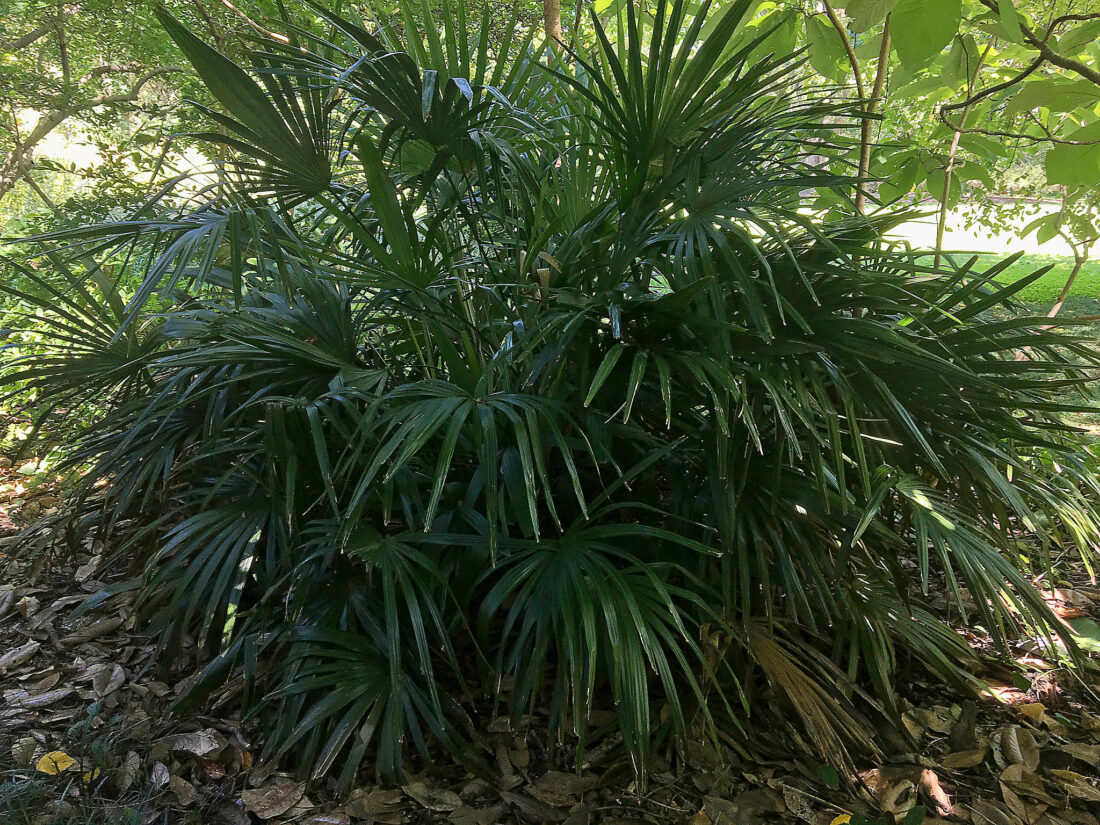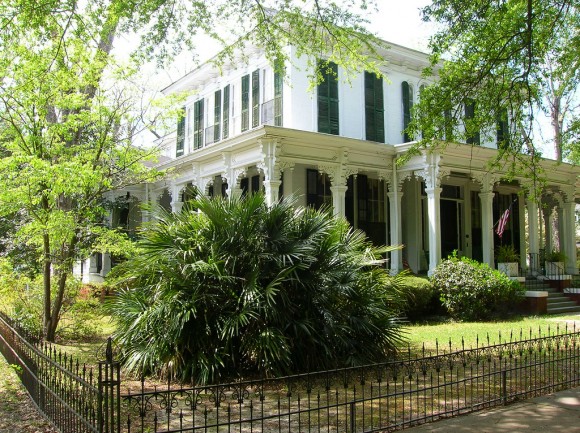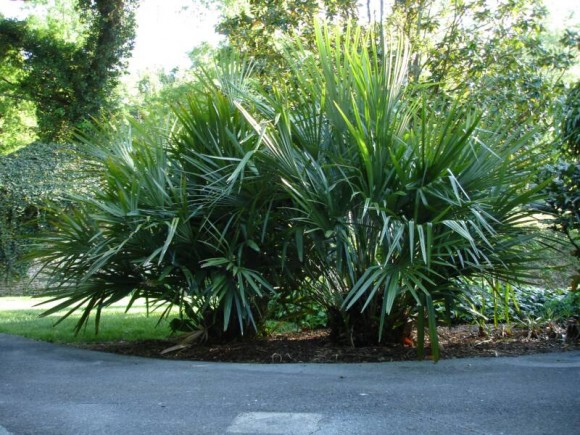Of all the plants in the world, I really do love palms. There’s something about them—their bold silhouettes, the way they sway in the breeze, the unmistakable tropical energy they bring to a space. But what really fascinates me is that, at their core, these towering trees are essentially giant blades of grass. That’s right—palms are monocots, meaning they grow from a single terminal point, just like your lawn.
Growing up in Raleigh, NC, I remember seeing big windmill palms (Trachycarpus fortunei) standing tall outside one of the community centers. Later, when I moved to Wilmington, NC, palms became even more a part of my daily landscape. From native sabal palms (Sabal palmetto) to the arching, silvery-blue Butia capitata from South America, Wilmington’s streets were lined with them.

Then came Pennsylvania. I tried growing palms there—tried being the operative word. It was a short-lived experiment. So you can imagine my reaction when I first visited Coastal Maine Botanical Gardens and saw needle palms planted in the landscape. I laughed. Audibly. There was no way that was going to work.
Well, the joke’s on me.
That grouping of needle palms (Rhapidophyllum hystrix) not only survived, but it made it through one of Boothbay, Maine’s coldest, snowiest winters. And this wasn’t a mild winter by any stretch. Locals tell me it was particularly brutal, so the fact that these palms pulled through is an amazing sign.
Now, we didn’t just leave them to fend for themselves. We wrapped them in protective cages and tucked leaf compost around their crowns for insulation. But still, these are palms in Maine—we’re definitely pushing boundaries here.
Needle Palms – Rhapidophyllum hystrix
Needle palms are native to the southeastern United States, primarily found in the understory of forests from Florida to South Carolina, and extending west into Alabama and Mississippi. They are considered one of the hardiest palms in the world, capable of surviving temperatures as low as -10 to -15°F. That’s impressive for a plant that looks like it belongs on a beach rather than in a frozen landscape. Unlike most other palms, which are more at home in warm, humid environments, needle palms are well-adapted to woodland settings, often found growing in shady, moist soils near streams and swampy areas.

They can eventually grow over six feet tall and eight feet wide, though they take their time getting there. Instead of a single trunk, needle palms form a dense, shrubby cluster of fan-like fronds that emerge from a fibrous, underground base. The spiky needles at the base of the plant—where it gets its name—can reach up to six inches long and serve as a natural defense mechanism against hungry animals and careless humans alike. In the wild, these spines protect the plant’s flowers and fruit, which grow tucked within the needle-covered base. The flowers are small, yellowish, and often hidden from view, but they give way to dark blue or black fruit that attracts wildlife.
Despite their tropical appearance, needle palms are remarkably drought-tolerant once established, able to handle both humid southern summers and dry spells. Their deep roots help them withstand high winds, making them a resilient choice for landscapes. And while they are slow-growing, they reward patience with their toughness, adaptability, and evergreen presence—even in places where palm trees seem impossible.
I can’t tell you how thrilled I am that these plants survived. A lot of our garden visitors spend their winters in Florida or other warmer places, so I can’t wait to see their reactions when they spot palm trees thriving here, in coastal Maine.
What’s next—coconuts in Boothbay?
-Rodney
Images: chillypalmtree.com, plantlust.com

I’m always excited to read your posts. I love palms and live in southern Maine. Thanks very much for sharing!!
Thanks, Jessica. Enjoy this warm(er) weather!
Wow, amazing pictures. Their dark green leaves makes it a beautiful addition to your landscape. Do you use any specific fertilizers or products to boost soil conditions to promote your palm growth?
What exciting news—we’re turning our deck into a tiki bar (well, turned) and a few palms would, of course, look perfect! Good info to know, thanks!